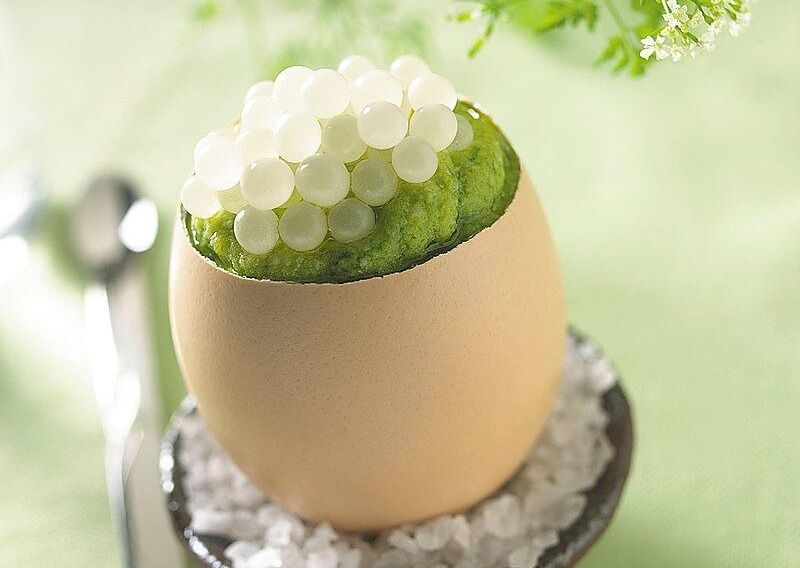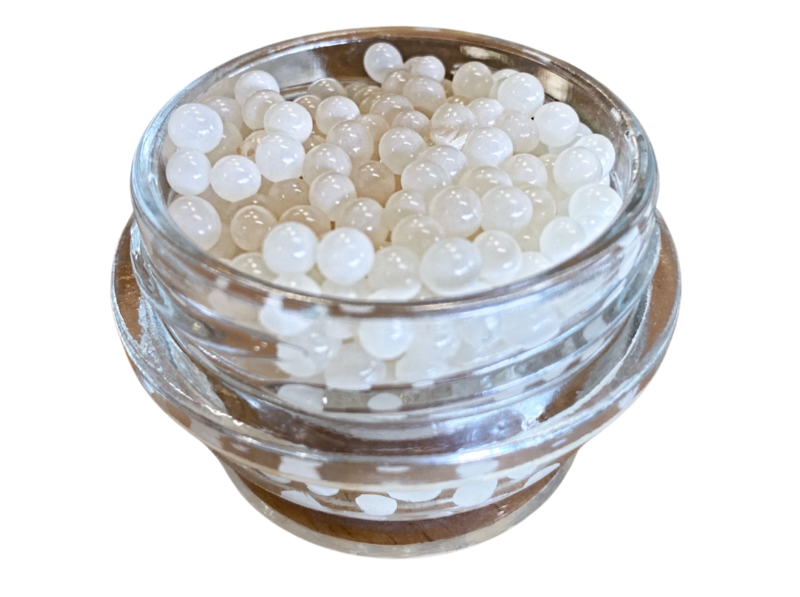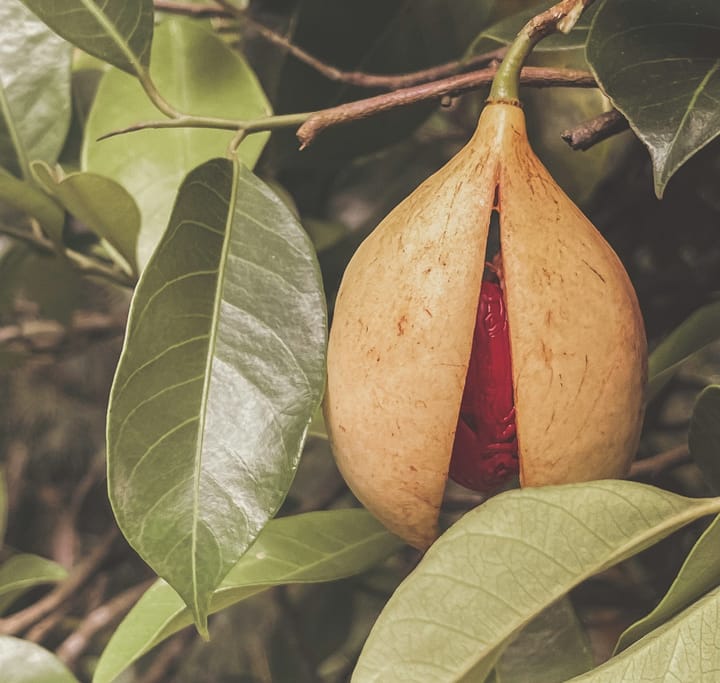Escargot Snail Caviar: Why Is It So Expensive?
Snail caviar, a blend of heritage and artistry, is a culinary gem for the discerning palate. Its white, pearl-like eggs not only embody nature's finest but also captivate with their attractive luminance, making each bite a visual and gustatory delight.

Caviar often evokes images of sturgeon fish. While most are familiar with the primary categories of caviar, many think of Salmon Roe or Tobiko as alternatives. Yet, have you stumbled upon the unique delicacy of Snail Caviar? Indeed, it's a real treat!
What is Snail Caviar?
Escargot caviar, often termed "escargot pearls," comprises the fresh or treated eggs from terrestrial snails.
Recognized as a luxurious gourmet product, its primary producers are France and Poland.
Historically, these "Aphrodite's Pearls" were valued not only for their taste but also for their purported aphrodisiac qualities.
What is So Special About Escargot Caviar?
Snail caviar stands apart in the world of gourmet delicacies, not just for its rarity but also for its unique sensory experiences.
Unlike the varying hues of traditional caviars—from deep blacks to vibrant oranges—snail caviar dazzles with its luminescent, almost translucent white pearls.
These are notably smaller, sometimes exhibiting a soft rosy tint. Beyond its visual allure, its standout texture promises an unforgettable "pop" sensation on the palate, followed by a rich, creamy aftertaste thanks to its high-fat content.
Escargot Varieties for Pearls
Unlike the Burgundy snail, renowned for its flesh in gourmet dishes, snail caviar is sourced from two specific land snails: the Helix Aspersa Maxima and the Petit Gris, prized for their delicate eggs.
The Helix Aspersa Maxima, also known as the African or large grey snail (Gros-Gris), belongs to the Helicidae family. Originating from the UK and western Europe, this herbivore can weigh between 15-40 grams and produces 120-180 eggs.
On the other hand, the Petit Gris, also termed the "Little Grey Snail," boasts a rich French lineage and is renowned for its delicate flavor and texture.
It is smaller than most canned snails, yields just 50-100 eggs annually. This limited production makes the caviar from Petit Gris an exceptional gourmet experience.
In an outdoor environment, each snail produces about 100 eggs annually, amounting to roughly 4 grams of Snail Caviar.
History and Origin
While the culinary tradition of consuming snails, or escargots, traces its roots to ancient civilizations such as the Romans and Greeks, the concept of savoring their eggs as a luxury item is relatively new.
France, known for its rich culinary heritage and its love for escargots, has been a frontrunner in popularizing escargot caviar.
Snail Eggs Market Price
Presently, the market rates for premium snail caviar hover around $3,000 per kilogram. While most won't purchase in such bulk, even a standard caviar serving – a mere few spoonfuls – can cost upwards of $100.

Why Escargot Caviar so Expensive?
This meticulous process underscores the revered status of snail caviar in the gourmet world. Here's why:
Harvesting Challenges
Gentle extraction is needed for snail eggs, nestled two to four inches deep in the soil, demand careful retrieval, challenging to spot and collect.
Often, rain washes them away or ground predators consume them, complicating the harvesting, especially in unpredictable weather.
Low yield of snail eggs, unlike prolific breeders, escargot offer limited eggs. Notably, one snail contributes only around 4 grams of eggs annually.

Production Nuances
Production entails rigorous tasks including cleaning, waste removal, setting traps for egg-laying, and intricate manual sorting.
A successful yield requires an precise environment control by indoor setting regulated at 15 °C with 80% humidity, ensuring multiple mating and egg-laying cycles.
Filtering only premium escargot pearl typically exhibits a white or soft pink hue.
Crafting Snail Caviar Method
Snail Caviar is crafted in two ways. The first method uses pasteurization to enhance shelf life, though its quality is debated among enthusiasts.
The De Jaeger method, on the other hand, blends sea salt, rosemary, citric acid, and a hint of starch, extending longevity without compromising taste or texture, albeit at a higher price.
Species & Quality
Helix Aspersa Maxima and the Petit Gris is the preferred snail for its superior egg quality and flavor.
To attain premium quality, Snails dine on a diet of fruits, vegetables, nuts, seeds, and grains, enriching the flavor of both their flesh and their eggs.
Unique Traits
Every snail, being hermaphroditic, can produce eggs. They typically bury them 1 to 1½ inches deep in soil.
A prevalent method involves housing snails in containers layered with soil and sand to facilitate egg collection.
Market Value
With only a few specialized escargot farms for caviar worldwide, its rarity enhances its market price.
In contrast to snails, a single sturgeon can provide up to 18 kilograms of eggs. For just 100g of Snail Caviar, approximately 25 snails are essential, underscoring its premium market position.
Flavor Profile
Escargot caviar offers an unrivaled tasting experience. The pearls encapsulate a subtle, earthy flavor, drawing comparisons to forest floor notes or fresh mushrooms.
They possess a gelatinous texture that gently pops, releasing their nuanced, woodland taste.
How to Serve with Snail Caviar?
There's a myriad of ways to indulge in Snail Caviar. Often, it's paired with blinis, sour cream, and a glass of champagne.
It can also enhance soups, desserts, salads, or even main courses. An intriguing dish to explore blends Snail Caviar with tuna, avocado, hints of vanilla, chili, and a splash of lime.
When it comes to using this delicacy, let your culinary creativity run wild and enjoy the gastronomic adventure!
Interesting Facts
- Diverse Palette: Depending on the snail's diet and environment, escargot caviar can exhibit a range of colors, from a soft white to deeper hues of pink or amber.
- Brief Freshness Window: Unlike many fish caviars, escargot caviar has a shorter shelf life, making timely consumption crucial to enjoy its optimal flavor.
- Gourmet Pairings: Escargot caviar graces the plates of many gourmet dishes, often accompanied by other luxury ingredients like truffles, foie gras, or atop fine canapés.
In Summary
Snail caviar exemplifies the pinnacle of gourmet indulgences. Beyond its flavor lies a rich tapestry of heritage and artisanal expertise.
This caviar stands as a tribute to nature's finest delicacies, cherished by those with a palate for the exquisite.
Its uniqueness spans from its crafting process to its aesthetics, feel, and flavor. If you have the chance to relish it, treasure every morsel!


